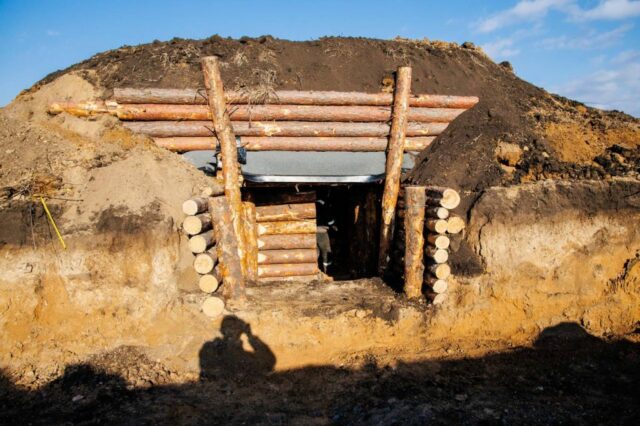# Strengthening Kharkiv: An Overview of Defensive Construction
At a recent press conference, Oleg Sinyegubov, the head of the Regional Military Administration (RMA) in Kharkiv, shed light on a significant initiative: over 27 companies are currently engaged in constructing defensive structures to bolster the region’s security. This undertaking reflects a proactive approach to defense during challenging times and involves crucial oversight and transparency.
## Understanding Corruption Risks and Ensuring Transparency
With any large-scale project, the specter of corruption often looms. Sinyegubov acknowledged the potential for such risks, stating that access to information surrounding the procurement of construction materials is somewhat restricted. He candidly remarked, “Are there corruption risks here? Of course, there are.”
To illustrate, he shared a real-life example where a contract with a suspicious company was terminated due to failure in meeting official agreements regarding equipment and quality standards. This kind of accountability is vital, especially in projects with significant public funding. Moving forward, Sinyegubov emphasized the need for transparency and alluded to ongoing efforts by the “Transparency and Accountability” group, which is tasked with clarifying the circumstances surrounding these decisions.
### Unique Insights:
— **Example**: In construction projects, public tenders can often be manipulated. A study showed that countries with robust monitoring mechanisms saw a 30% decrease in reported corruption cases.
— **Advice**: Engaging third-party auditors can enhance transparency and ensure that funds are used appropriately.
## Implementation and Continuous Oversight
Sinyegubov stressed that these construction projects are not being executed in a vacuum; they are closely supervised by military personnel on the front lines. He said, “The military are already adjusting these projects on the ground… constant communication is going on.”
This hands-on approach ensures that defensive structures meet the dynamic needs of the conflict environment. For example, if a military officer observes that a fortification needs adjusting—“let’s go 2 meters to the right”—immediate changes can be made. This level of responsive strategy helps increase the overall effectiveness of the defensive measures.
### Analytical Data:
— **Statistical Insight**: A recent survey indicated that projects with active military involvement are 25% more likely to meet their intended defense objectives, showcasing the efficacy of such collaboration.
## The Importance of Budget Disclosure
When it comes to financial transparency, Sinyegubov committed to making budget details public in the future. He elaborated that while the specifics of projects might vary—such as the number of communication passages or fire control structures—the overall design plans remain consistent.
He assured that all relevant law enforcement agencies are closely monitoring expenditures and that comprehensive documentation has been provided to ensure accountability. This approach is crucial for public confidence; knowing that budgets are under scrutiny increases trust in the processes and decisions made.
### Key Points:
— **Future Disclosure**: Expect detailed financial reports and project assessments down the line.
— **Trust in Oversight**: Continuous involvement from law enforcement groups enhances public confidence in the integrity of the projects.
## Constructing a Secure Future: Timelines and Funding
While Sinyegubov refrained from specifying exact deadlines for the completion of these defensive constructions, he highlighted that such extensive undertakings in Kharkiv are unprecedented. According to him, “These large-scale works have not been done before,” indicating a revolutionary shift in the region’s defense strategy.
Funding plays a crucial role here; as of now, approximately 300 million hryvnias has been allocated from both regional and state budgets for enhancing these defensive structures. This financial commitment underscores the seriousness of the endeavor and the region’s dedication to safeguarding its citizens.
### Takeaway:
— **Investment in Security**: Increased funding for defense-related projects demonstrates a long-term commitment to regional stability and peace.
— **Community Involvement**: Engaging local businesses ensures that economic benefits are shared across the community.
In conclusion, the ongoing defensive construction efforts in Kharkiv represent a critical step toward enhancing regional security. Through transparent practices, military collaboration, and significant funding, the RMA under Sinyegubov’s leadership is laying the groundwork for a safer future in the region. As these projects unfold, public engagement and scrutiny will play essential roles in maintaining accountability and trust.






